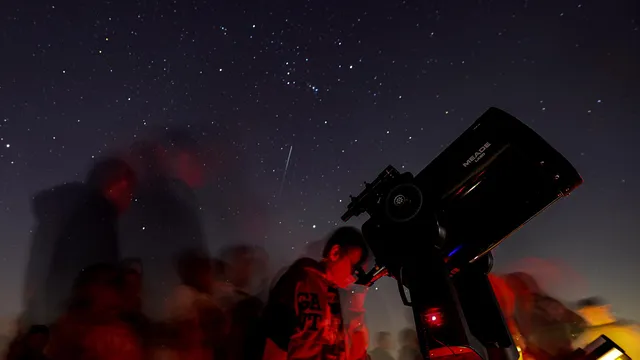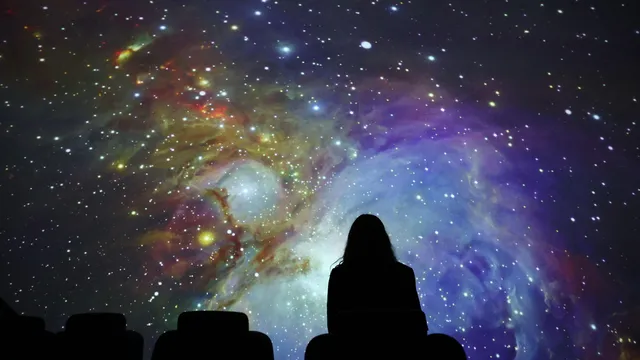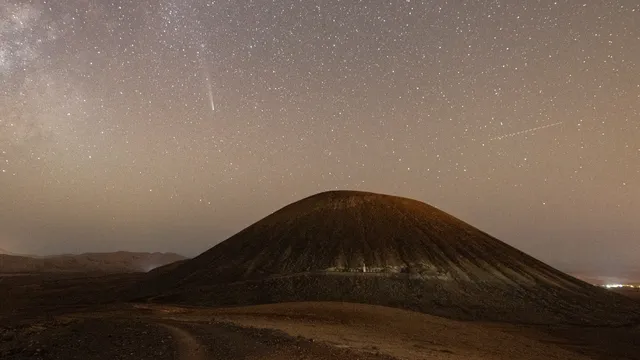The U.S. National Science Foundation and the Department of Energy have unveiled the first images from the Vera C. Rubin Observatory, showcasing its remarkable capabilities just two months into its testing phase. Located in Chile, the observatory has been in planning and development for nearly three decades, with its cost exceeding one billion dollars. The first captured images highlight its extraordinary power in visualizing the night sky.
The telescope features an unusually wide field of view—3.5 by 3.5 degrees—each image covering an area of the sky roughly 45 times larger than that of the full Moon. It is designed to capture approximately 1,000 images per night, enabling a full mapping of the southern sky every three to four days. As a result, each region of the sky will be recorded around 800 times over the observatory’s planned ten-year operational period.
Unlike narrow-focus telescopes designed for detailed examination of individual objects, wide-field instruments like this one scan vast sections of the sky. This allows scientists to track dynamic processes and transient events, discover new celestial bodies, and direct other instruments toward newly identified targets for more in-depth observation.
The telescope’s primary mirror has a diameter of 8.4 meters—relatively modest compared to future ground-based giants like the Giant Magellan Telescope with its 25-meter mirror, expected to be operational by 2030. Nevertheless, the Vera Rubin Observatory's key advantage lies in its state-of-the-art camera—about the size of a small car and weighing around three tons. It captures images at a resolution of 3,200 megapixels, making it the largest digital camera in the world.
The camera uses six color filters, each capturing a specific narrow wavelength range—thus recording separate images for each color. A high-precision mechanical system allows the filters to be swapped within minutes, providing nearly simultaneous imaging of the same section of the sky in several different colors. The final images are composites of multiple exposures and contain an immense amount of information.
Though not intended for observing specific details such as galaxies or planetary systems, the telescope is optimized for capturing wide, extremely detailed panoramas. It is expected to register countless celestial objects and provide continuous monitoring of cosmic dynamics. Around 20 terabytes of data (20,000 gigabytes) will be collected each day, with a total of approximately 500 petabytes (half a billion gigabytes) expected over the ten-year period—comprising astronomical images and a catalog of billions of stars, galaxies, and other celestial bodies.
Researchers predict the telescope will identify more stars and planetary systems than any previous instrument and will contribute significantly to Earth’s protection by detecting large numbers of asteroids, including potentially hazardous ones. In just ten hours of test observations, the telescope discovered over 2,000 previously unknown asteroids—compared to the current global annual rate of about 20,000 newly discovered asteroids.
“The Rubin Observatory will collect more information about the Universe than all optical telescopes in history combined,” said Brian Stone, Acting Director of the U.S. National Science Foundation. “Through this extraordinary scientific platform, we will explore numerous cosmic mysteries, including dark matter and dark energy that fill the fabric of space.”
The telescope is located atop Cerro Pachón in central Chile, at nearly 2,700 meters above sea level. Over recent decades, Chile has become a global hub of optical astronomy thanks to its unique combination of high mountains, dry climate with minimal cloud cover, and remote areas shielded from light pollution.
The observatory is named in honor of American astronomer Vera Rubin (1928–2016), whose pioneering research on galaxy rotation laid the foundation for the theory of dark matter—an invisible mass that explains galaxies’ unexpectedly high angular acceleration. The telescope is also expected to contribute to unraveling dark energy—the force believed to be accelerating the expansion of the Universe—as well as other fundamental cosmological questions.
The observatory is jointly managed by scientists from the SLAC National Accelerator Laboratory (part of the U.S. Department of Energy) and NOIRLab—the National Science Foundation’s center for optical astronomy. The project includes a broad international partnership network, including Israel, which will participate through the space telescope ULTRASAT—currently being developed at the Weizmann Institute and scheduled for launch in about two years. Like Vera Rubin, ULTRASAT will have a wide field of view and will repeatedly scan the sky, but in the ultraviolet rather than visible spectrum, making the two observatories complementary. Under the agreement between the countries, American scientists will gain access to ULTRASAT’s data, while Israeli researchers will access Vera Rubin’s.
The anticipated data volumes from the observatory will add to the extensive astronomical initiatives of recent years, including the Milky Way maps from the European Space Agency’s Gaia space telescope and NOIRLab’s own large-scale sky survey. Recently, Israel’s LAST array, developed by the Weizmann Institute, also joined these efforts, now operating in southern Israel. While it covers a smaller area, LAST observes each zone multiple times per night, capturing rapid changes and even generating more data than Vera Rubin. Each of these initiatives has its own goals and advantages, but together—supported by the new capabilities of computational technologies and big data analysis—they mark the beginning of a new era in astronomy.
The Vera Rubin Telescope also supports an educational program that provides access to its data and images for students and educators for scientific and educational purposes. “The Vera Rubin Telescope is an investment in our future,” said Michael Kratsios, then Director of the White House Office of Science and Technology Policy. “It will lay the foundation of knowledge upon which our children will build tomorrow.” |BGNES

 Breaking news
Breaking news
 Europe
Europe
 Bulgaria
Bulgaria







